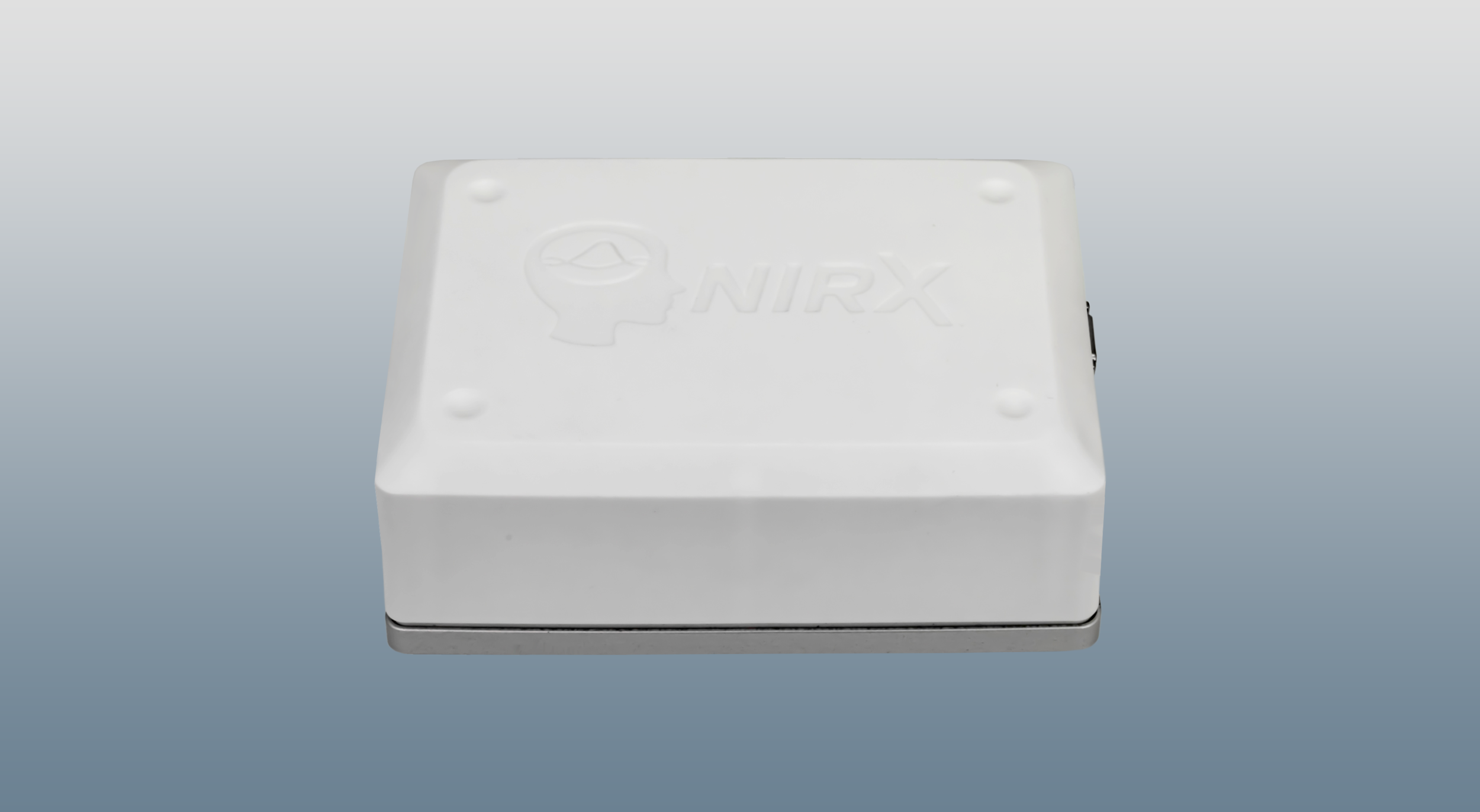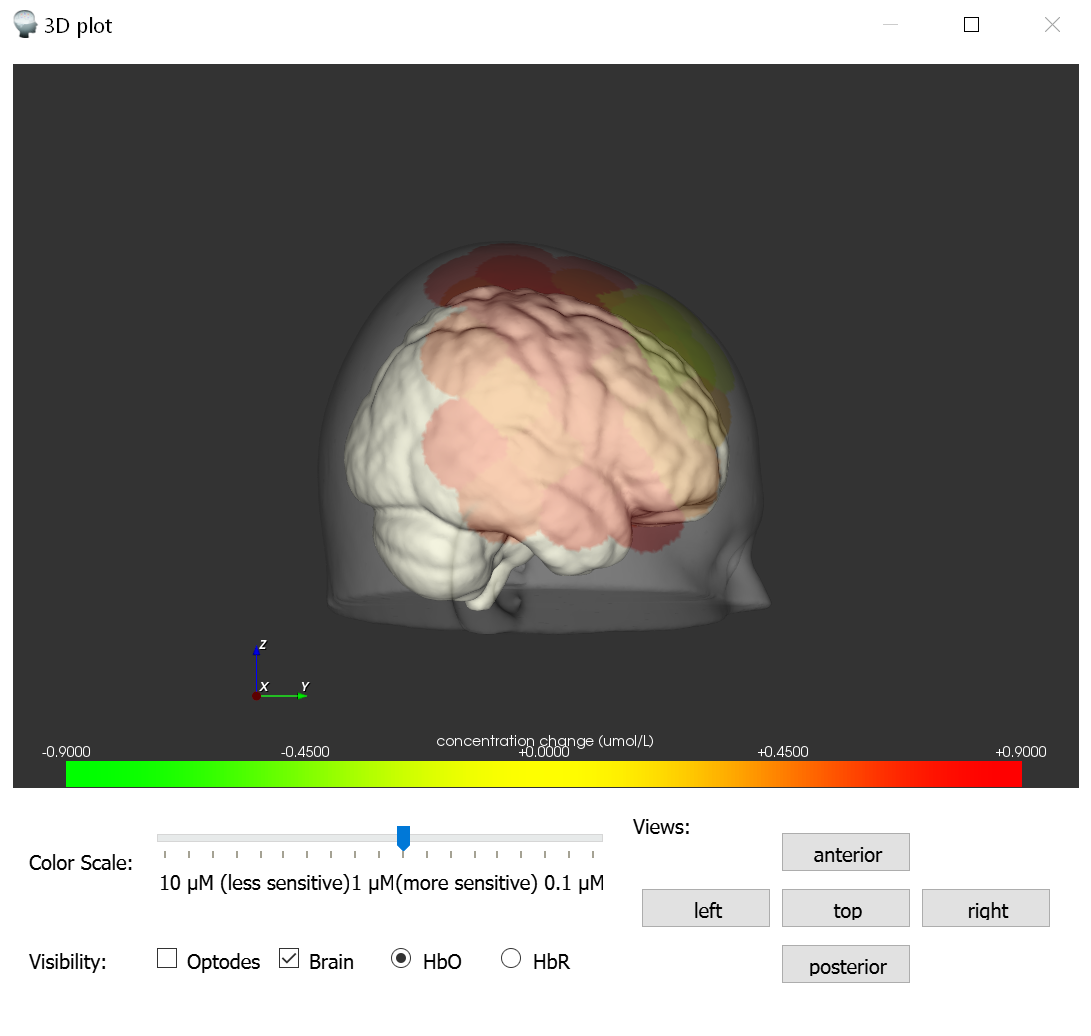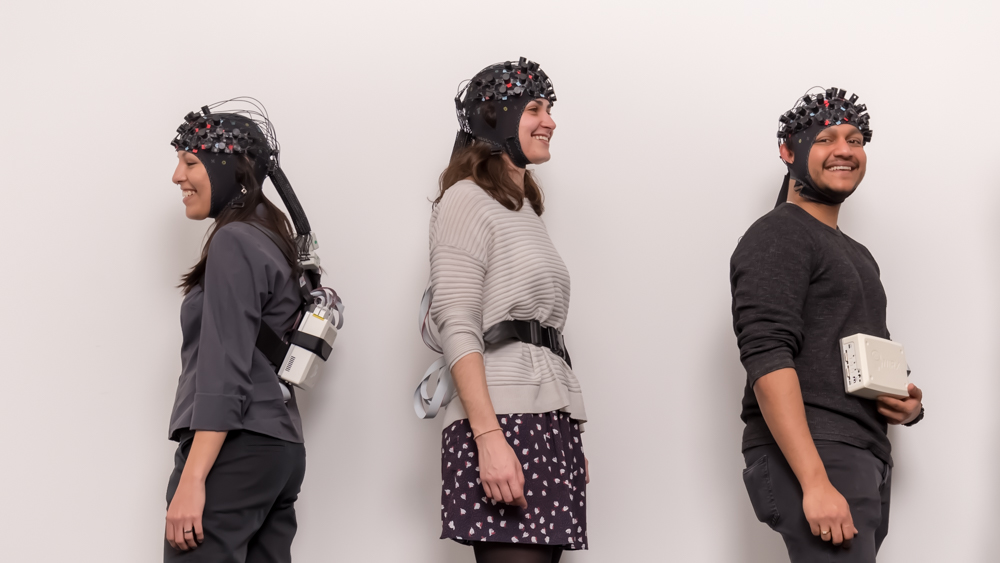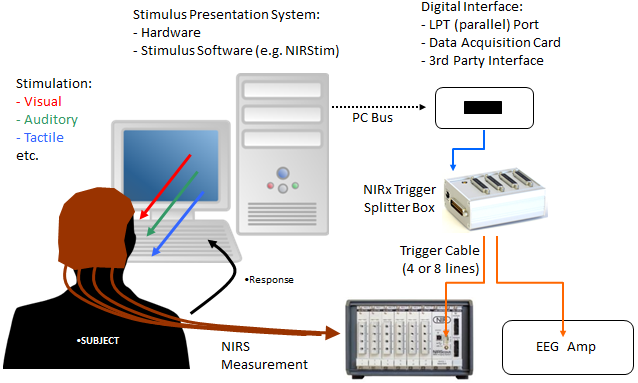Measure fNIRS in high-density set-ups, from anywhere on the head, concurrently with (nearly) any other modality. Monitor your subjects via Wi-Fi while direct-to-device system recording ensures data is always stored, or choose higher-bandwidth USB connectivity for applications in BCI and neurofeedback research paradigms that require ultra-high performance processing.
Setup fNIRS Fast
NIRx uses the NIRScap system for an incredibly fast setup (see video of <60-second setup).
Multi-Modal Integration
NIRSport2 integrates seamlessly with EEG, eye-tracking, cochlear implants, TMS, tDCS, EMG, pulse oximetry, and other modalities.
Application-Specific Probes & Headgear
Specialized probes and headgear available for comfortable measurements on any subject, for any application.
User-Friendly, Modular, Scientifically Supported
Join a worldwide team of researchers continuously expanding the possibilities of fNIRS.
The NIRSport2 is a user-friendly, modular, and robust wireless functional near-infrared spectroscopy (fNIRS) platform which measures hemodynamic responses to neuroactivation via oxy-, deoxy-, and total hemoglobin changes in the cerebral cortex.
The NIRSport2 comes with a host of ready-to-implement upgrades and modules to meet the needs of a broad range of cognitive neuroscience applications.
The Most Powerful Wireless, Portable fNIRS Solution
Optimize your NIRport2 system with the precise configuration for your research.
Single System Source numbers:
from 8-64 (8-source increments)
Detector numbers:
from 8-64 (8-detector increments)
Channel count (topography):
from 23-200+ (depends on montage / ROIs)
Source types:
LED (2-wavelength)
Detector types:
SiPD or APD
Tandem-Cascading Options:
Dual-Tandem (2-system), Tri-Tandem (3-system), Quad-Tandem (4-system)
Aurora fNIRS Recording Software
Completely redesigned software that redefines user instrument control and fNIRS data acquisition
The NIRSport2 comes together with Aurora fNIRS: a new software platform designed to maximize user-friendliness, flexibility and intuitive workflow.
In just a few clicks, Aurora fNIRS allows you to set-up a complete experimental configuration. The automated signal optimization algorithm ensures optimal signal quality before a measurement is started. Once data is being recorded, HbO and Hb concentration changes can be visualized in real-time in several display modes. In addition, high-end whole-head visualizations are immediately available.
Aurora fNIRS is developed exclusively for the NIRx NIRSport2. Learn more about Aurora fNIRS.
German Engineered to Meet the Most Demanding Research Requirements
The back of the NIRSport2 with USB mini port for hard-line data collection for high-bandwidth, rapid-sampling requirements (e.g., BCI, neurofeedback). The battery may be wall-powered during recording and LED indicators give visual feedback on battery levels on the system itself for computer-free measurements (battery levels are also shown in the recording software for hard-line or wireless recording using the Aurora fNIRS software).
The front of NIRSport2 with hard-line TTL event trigger port (top), allowing for ~0ms latency event triggers. Wireless triggers are also allowed, so users have flexibility in their event design. 2x source ports (left side) each allow 8 sources to connect (16 total), 2x detector ports (right side) each allow 8 detectors to connect (16 total).
Side 1 of the NIRSport2 shows the heat-dissipation (“head sink) bottom metal plate, which allows for maximizing the source and detector power and sustained performance, even in very warm outdoor conditions.
Side 2 of the NIRSport2 shows one of its heat-dissipation vents (additional vent on bottom) which further improves system performance.
NIRSport Tandem-Cascading
The NIRSport2 may be ‘daisy chained’ to connect multiple systems together in tandem-cascading configuration. 2, 3 or 4 systems may interconnect in tandem-cascading mode; in each case, all data and event trigger information is fully-synchronized between NIRSport2 devices.
For example, in a dual-tandem configuration, detectors from system 1 are reading light from sources in both system 1 and system 2. Likewise, detectors from system 2 are reading light from sources in both system 1 and system 2 as well. This allows research teams to easily expand their studies by combining NIRSport 2 instruments to measure either:
larger brain regions of interest
higher-density configurations
hyperscanning (multi-subject) fNIRS measurements
Event triggers may be sent wirelessly or hard-lined through the trigger port (parallel port adapter included - option to use BNC spitter input) directly to the NIRSport system.
The back of NIRSport2 with cascading ports (extension A and B) to link multiple NIRSport amplifiers together for extending source/detector number and channel count.
NIRS Researchers Supporting NIRS Researchers
NIRx has been actively involved, as a company or through our internal researchers, in advancing NIRS hardware, software, and methodology for the past 30 years.
We dedicate 100% of our company to selling, supporting, and advancing NIRS.
We offer the highest-level scientific support to our customers, ensuring that the nuances of fNIRS are fully appreciated.
You can learn more about NIRx support on our support page.
NIRSport2 - The Ideal wireless, portable fNIRS System for Concurrent NIRS/EEG Recording
An integrated fNIRS/EEG head cap
Freely-configurable probe arrays easily integrate with EEG and tDCS within a single NIRx NIRScap.
Right: NIRScap integration with passive EEG electrodes and NIRSport2 NIRS 'optodes' (i.e., NIRS source and detector probes).
NIRx can easily integrate with nearly any EEG electrode for concurrent NIRS/EEG measurements. Integration with passive unshielded, passive shielded, active, and sponge electrode solutions all exist for NIRSport2 and NIRScap.
Example of NIRSport2 + EEG Data Integration
Data integration with NIRSport2 and EEG systems is easy with event synchronization. This may be done at the start and end of experiments, during 'trigger' events, or arbitrarily during the experiment.
Example Right: The event trigger generated by the presentation computer is sent to the digital interface (trigger splitter), where the events are then sent to the NIRx trigger splitter box, splitting each trigger and maintaining the proper voltage, sending the even signal to the NIRS and EEG systems. This trigger-splitting method may be used from different input devices (e.g., TMS, eye-tracking, etc.), and sent to multiple recording devices.
NIRx fNIRS Application Overview
NIRSport2 with back strap for mobile applications: the system weighs only ~800g. Keeping the amplifier on the back, rather than mounting it to the head cap, leaves the head and neck free to move in a naturalistic way.
Child measurements
Cochlear Implant research
Cognitive Disorders
Developmental Disorders & Psychology
Hyperscanning (multi-subject measurements)
Movement/Balance (with longer probe cables)
Infant Monitoring
Neuropathology
Neuropsychiatry
Social Interaction
Speech/Language
Stroke and Rehabilitation research
Traumatic Brain Injury research
Visual Impairment/Stimulation
Technical Specifications
| Maximum Sources | 16 (can be configured to 8, and up to 64 in multi-device mode) |
| Maximum Detectors | 16 (can be configured to 8, and up to 64 in multi-device mode) |
| Source Wavelengths | LED: 760nm & 850nm |
| Source Illumination Type | LED |
| Sampling Rate | Up to 240 Hz |
| Detector Sensor | Silicon Photodiode (SiPD) or Avalanche Photodiode (APD) |
| Operation mode | USB, Wi-Fi, Stand-alone direct-to-device recording mode: no computer, tablet, or smartphone required |
| Maximum number of topographic channels | 45-55 channels, depends on optode layout used (up to 200 channels in quad-tandem mode) |
| Maximum number of tomographic channels | 256 (up to 4,096 in quad-tandem mode) |
| Optode type | Single-tip, or specialized Dual-tip optodes (faster set-up time and better contact to skin), Blunt-Tip (infant and child applications, better comfort) |
| Key Measurement Features | Time multiplexing, full frequency-encoded measurements, and dynamic gain state switching |
| Detector Dynamic Range & Sensitivity | > 80 dBopt measurement dynamic range |
| Event Synchronization | Wireless (LSL; Lab Streaming Layer), Cable (8-bit TTL Input) |
| Included Data Acquisition Software | Aurora fNIRS |
| Data Format | Raw light intensity: tab-delimited (may be analyzed in any environment) |
| Data Output Options | NIRx format: .wl1, .wl2, etc.; .NIRS format; raw format |
| Headgear | NIRScaps: freely-configurable, measures whole head, fits all age ranges, multi-modal |
| BCI/Neurofeedback | Optional module for Aurora fNIRS |
| Multi-modal Compatibility | Built-in: EEG, tDCS/TES, eye-tracking, motion-tracking Requiring module: fMRI, MEG, TMS |
| Hyperscanning Configuration | Wireless hyperscanning (up to 8 or more subjects) |
| Multi-distance/Short-distance Probe Arrays | Yes |
| 3D Depth-discrimination | Yes |
| Included Accessories | NIRScaps, System carrying case, Trigger cable |
| Optional Accessories | Recording/Analysis Computers, Computer cart, Active Trigger Splitter, fMRI/TMS/MEG Compatibility, Flat and Blunt-tipped Probes, Animal NIRS Module, BCI/neurofeedback |
| Temperature Range | 10 - 40C (operating), -15 - 70C (storage) |
| Spectroscopic Technique, Phase Type | Continuous Wave, Single Phase |
| Humidity | 20% - 80% Relative, Non-condensing |
| Power Supply Voltage and Consumption | 90 to 250 VAC (50Hz - 60Hz); 175W Max |
| Dimensions (WxHxL), Net Weight | 162 mm x 125 mm x 60 mm, 970 g |
Click below to learn more on NIRS
About NIRS and NIRx
- fNIRS and NIRx Overview
- NIRx NIRS Publication Sample
- NIRx Newsletters
- NIRx Webinars
- fNIRS Analysis
Applications
- fMRI-concurrent fNIRS
- EEG-concurrent fNIRS
- TMS-concurrent fNIRS
- Customized Real-time Analysis in NIRS: BCI / Neurofeedback
- Combining eye-tracking with fNIRS
- Using NIRS to conduct child and infant measurements
Products
- NIRScout NIRS Imaging System for Multi-Modal Integration
- NIRSport 2 Portable NIRS Imaging System for Multi-Modal Integration
- NIRS Caps & NIRS Optodes (Probes)
- NIRS software
Downloads




















